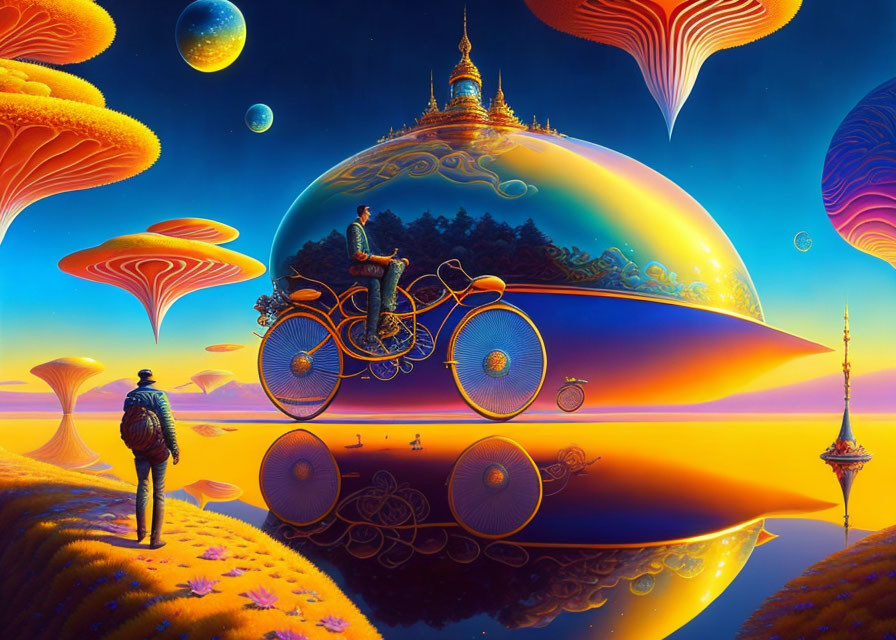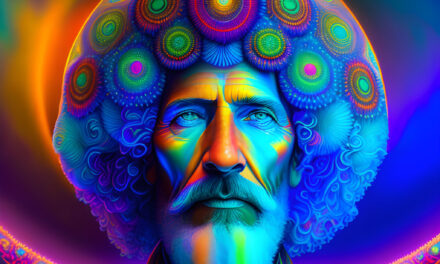In one of his lectures, Stanislav Grof mentioned that his friend Michael Murphy, one of the founders of the Esalen Institute, published a book in the 1970s called “The psychic side of sports,” which discusses information about how people experience strong mystical and holotropic states of mind while doing sports. The word “psychic” is synonym to supernatural or mystical. Grof explained that our narrowly materialistic civilization is in this way replacing missing spiritual and initiatory rituals, which were otherwise an integral and necessary part of life in all ancient cultures.
Today’s society stubbornly pretends that we have already “grown out“ of mystical experiences because “only uneducated and primitive people believed in them in the past.” But in reality, we still seek out these experiences very deliberately, just don’t call them with this name, and usually don’t talk about them much. However, Michael Murphy writes in his book that he and his co-author Rhea White collected thousands of testimonies from various athletes about such extraordinary experiences. If you are interested in this book, it is available in digital form on the “archive.org” website.
People doing different sports describe their experiences in various ways. For example, as a strong feeling of inner peace and happiness, feelings of calmness and timelessness, feelings of detachment or separation from their small self, strong feelings of boundless existence, flow with the activity, a sense of weightlessness, feelings of ecstasy, feelings of great strength and perfect merging with the activities they are doing, perfect connection with the present moment, and complete surrender to the activity being performed, feelings of mystical awe, infinite existence, and unity with everything around them. Anyone who has experienced such things during meditation, holotropic breathing, or in a trip knows exactly what is being talked about here.
In team sports like football and basketball, athletes sometimes describe experiencing a connection with other team members, creating a common consciousness, and playing completely instinctively. In this state, they are able to coordinate their activities on the field without any problems. They even claim to strongly perceive when a team member loses this connection for some reason.
Fans in the stands sometimes experience similar connections during collective sports. The stands also react completely instinctively, “like one soul.” My friends who used to go to football matches to cheer their teams told me a lot about these experiences, and according to them, these moments of mutual connection with other people were some of the most amazing things they have ever experienced. Players on the field also reported strongly perceiving such rare moments when they are connected with people on the stands, and suddenly everything seems to happen “completely on its own.”
Many athletes also talk about being positively psychologically addicted to these experiences. For example, they simply have to go for a run because the states they experience help them deal with stress, sort out their thoughts, etc. And these states seem deeper and more meaningful to them than anything else they experience in life.
Here are a few testimonies:
- Runner – I usually run for an hour, the first half-hour for my body and the second half-hour for my soul. In the second part, I feel like a part of the entire universe.
- Skier – When I ski down a really long slope, I reach a state of complete calm and silence without fear.
- Mountaineer – When I found myself at the top, at 7500 meters, surrounded by the rugged and unrestrained energy of the mountains, I experienced absolute calm and timeless existence. The silence was not empty, it was full of life, and I experienced perfect unity with everything.
- Athlete – Even in the midst of the biggest commotion on the stadium, I can experience the absolute silence of the present moment. It’s merging with space-time, it’s merging with the entire situation I’m experiencing.
- Professional dancer – When I immerse myself in movement, I experience embodiment, dance happens by itself, I just watch it and watch myself dancing.
- Skydiver – When I fly, I feel really “alive” at that moment – I immerse myself in silence and merge with everything around me.
- Race car driver – At the highest speeds, I enter a special state in which I experience perfect connection with the machine and the racetrack, and I very delicately perceive the limits of each situation.
Further testimonials come from spectators and friends. For example, when the legendary footballer Pelé participated in his first World Cup in 1958, he supposedly played in a trance or ecstasy every time – it can be seen clearly on footage from the matches. It was as if he could predict what would happen in the next moment, and his face displayed enthusiastic amazement throughout the game.
In another case, a woman described how she perceives her relative, a famous dancer, while dancing – even when she dances a “regular” waltz to the tune of “The Blue Danube,” she lets herself be carried away by the music and the ecstasy it brings her is evident, and other people perceive it and are deeply affected by it.
These states have also been scientifically studied. For example, a stuntwoman underwent an experiment measuring her breathing and heart rate while attempting to break the men’s speed record in a rocket car. It turned out that even at speeds exceeding 900 km/h, she had the same heart rate and breathing rate as when she was relaxed. And that’s exactly how she described her experience – she reportedly achieved a state of complete calm and complete awareness of the present moment.
So it is clear that mysticism and states of expanded consciousness have not disappeared from our lives in modern times, we just experience them in different contexts. There are many such testimonies in the book, but as the authors found out, not every athlete has the courage to speak about these experiences. Unfortunately, our Western culture officially subscribes to materialism, and not everyone has these intense experiences. Some people are actually quite afraid of such states, in which they go beyond the boundaries of their normal perception of their small selves, and they probably subconsciously block them. Such people then understandably shout loudly that it’s all just “subjective illusions”. They are protecting themselves and their very limited perception of their own existence. Unfortunately, it is often the case that people with the most limited paradigm have the biggest need to impose this very narrow way of understanding on everyone else. But there’s nothing to be surprised about – our inner “limits of what is possible” are always surrounded by a fear of the unknown that lies beyond them, and so crossing them is not easy…




